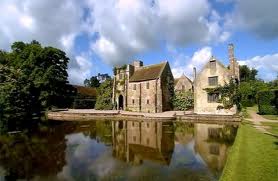Imagining Wellington: From “Punch” to Pantheon
Southampton University, which holds the Wellington Papers in their collections, is hosting the 22nd Wellington Lecture with Dr. David Howarth on October 27th. Established in 1989, from an endowment from the Spanish Ambassador, the Wellington Lecture is given each year on aspects of the life and times of the first Duke of Wellington.
Over the years, the University of Southampton has welcomed a host of distinguished speakers to present the lecture. This year they’ve selected Dr David Howarth, Head of History of Art at the University of Edinburgh, who will present his lecture entitled ‘Imagining Wellington: From “Punch” to Pantheon.’
Refreshments will be served from 5:30 p.m. before the lecture begins at 6:00pm. This event is open to the public and free to attend. More information is available here.
Dr. Howarth’s first book was a study of the pioneer collector in England, Thomas Howard, 2nd Earl of Arundel (1585-1646): Lord Arundel and his Circle (Yale, 1985), published in conjunction with an exhibition on Arundel held at the Ashmolean Museum Oxford which Howarth co-curated with Nicholas Penny: Howarth’s Images of Rule (London and Berkeley, 1997), provided an overview of the relationship of art and politics in early modern Britain and it has become established as a standard work on the cultural history of Renaissance Britain. Complemntary to this publication was his editorship of Art and Patronage in Caroline England. More recently, Howarth has specialized in cultural relations between Great Britain and Iberia. Following the publication of his book, The Invention of Spain, he was Chief Guest Curator for the National Galleries of Scotland Edinburgh Festival exhibition for 2009, The Discovery of Spain. He is currently writing a biography of Rubens, commissioned by Oxford University Press.
There is no shortage of caricatures featuring the Duke of Wellington. Below are just a sampling of the prints that were published during his lifetime.
In an interesting side note – and one redolent of 18th and 19th century aristocratic eccentricity – Sir Edward Du Cann, an MP and former Conservative Party chairman, has the largest privately owned collection of Wellington caricatures known to exist and has pulished a book on the subject.
The book blurb states that: “From his collection of more than 230 caricatures of the great Duke of Wellington, Sir Edward has selected 105 for publication. He has written a short introductory piece regarding the significance of caricature as a reflectionof popular opinion at the time of Wellington’s entry into domestic politics after his return to England from the Continent following his defeatof the tyrant Napoleon at the Battle of Waterloo. This was the golden age of English caricature and the selection includes examples of the work of Cruikshank, John Doyle, W. Heath, Sharpshooter and others,including some in the collection which are not listed in the British Museum catalogue. There has been no previous publication of caricatures of the Duke of Wellington on this scale. Thus as a popular viewpoint of the history of the times, the book offers a unique account. Each caricature is accompanied by a short note about the artist and publisher.”
But back to the subject of aristocratic finances – it seems that Sir Edward has had on again, off again fiscal troubles since the 1980’s. His bad debts were even aired in the House of Commons. In April 1989, Dale Campbell-Savours, the Labour MP for Workington, tabled an Early Day Motion asking the House to note a summons against Sir Edward by a London firm of lawyers, Boodle Hatfield.The motion said that clients of Boodle Hatfield had received a cheque for pounds 25,000 from Sir Edward which had bounced. The debt was later settled. Later that decade, Sir Edward, whose home is at 15th-century home, Cothay Manor, faced bankruptcy and the loss of his nearby property, Tremlett Hall Farm, which surrounds the hamlet of Greenham on the Somerset-Devon border. As well as the farmhouse there is a bungalow and a staff cottage in the village. The buildings are considered exceptional for a farm of its size. Sir Edward attempted to buy the property back from the bank. At the time, Lady du Cann said the publicity surrounding the debts was obscuring the great deal of good work her husband had done – ‘This whole thing is becoming absurd. Look in Who’s Who and see what he has achieved. There is masses of it.’
Cothay Manor
She felt that difficulties over debts were a normal part of business life. ‘If you are in business then you are going to have arguments with people,’ she said. ‘An awful lot of what is published is wrong, but he ignores it.
‘We have had difficulties with Tremlett Farm because somebody has been foul with us and not paid up. There is a knock-on effect. My husband is a private person. He is not an MP or the chairman of any company and he has retired. He is nearly 70 and I really think enough is enough.’
Let us hope that Sir Edward’s passion for collecting Wellington caricatures is not at the heart of his financial troubles, although I for one can well understand the temptation.
For more the subject of Wellington and caricature, I recommend The Duke of Wellington and His Political Career After Waterloo – A Caricaturist’s View by Edward Du Cann and The Duke of Wellington in Caricature by John Physick.







